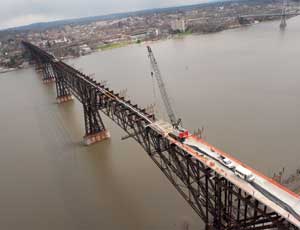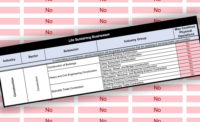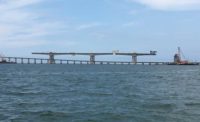35 years after traffic was suspended, a former railroad bridge gets a major facelift.
A nearly 7,000-ft-long railroad bridge is undergoing an extreme $35-million makeover over the Hudson River, thanks to hundreds of precast concrete panels, community zeal and the windblown determination of engineers and contractors. When completed by October, the revamped 121-year-old Poughkeepsie-Highland Railroad Bridge may be the world�s longest pedestrian bridge at 6,768 ft, say officials.

The historic bridge’s 3,094-ft-long, 25-ft-wide main span consists of seven trusses supported on steel towers and concrete piers at each side of the river, plus four steel towers on concrete-and-masonry piers in the river. Soaring 200 ft above the Hudson, the structure also spans roads, rail tracks and a residential neighborhood and sits between the cities of Poughkeepsie and Lloyd, about 64 miles north of New York City.
Closed to railroad traffic after a fire in 1974, the imposing structure was bought in 1998 by Walkway Over the Hudson, a non-profit group. The private Dyson Foundation donated $2.1 million in 2007 to fund inspections. “It was unclear at that point whether it would be a project,” notes Amy Husten, the non-profit group’s executive director.
A team led by Bergmann Associates, Rochester, N.Y., began extensive inspections to ensure it could handle anticipated pedestrian traffic, plus emergency vehicles and three 35-ft-wide viewing platforms, says Mike Cooper, Bergmann structural engineer. Inspectors went through rope-access training to inspect the structure for the first time in 30 years. Divers were also employed. After processing the gathered data, “we began detailing steel repairs in January and February” of 2008, Cooper adds.
Peter Melewski, Bergmann principal, says the bridge overall “was in very good shape for its age.” The superstructure and the approach viaducts had typical 10% to 20% section loss due to corrosion. Inspectors found some sections with up to 50% loss, but the rust layer on the bridge actually provided a patina of protection from faster rates of corrosion, he says. Cooper adds that, “from a structural perspective, you want to repair everything that looks bad, but we struggled to overcome the paradigm, What needs to be repaired, and what does not?”





Post a comment to this article
Report Abusive Comment